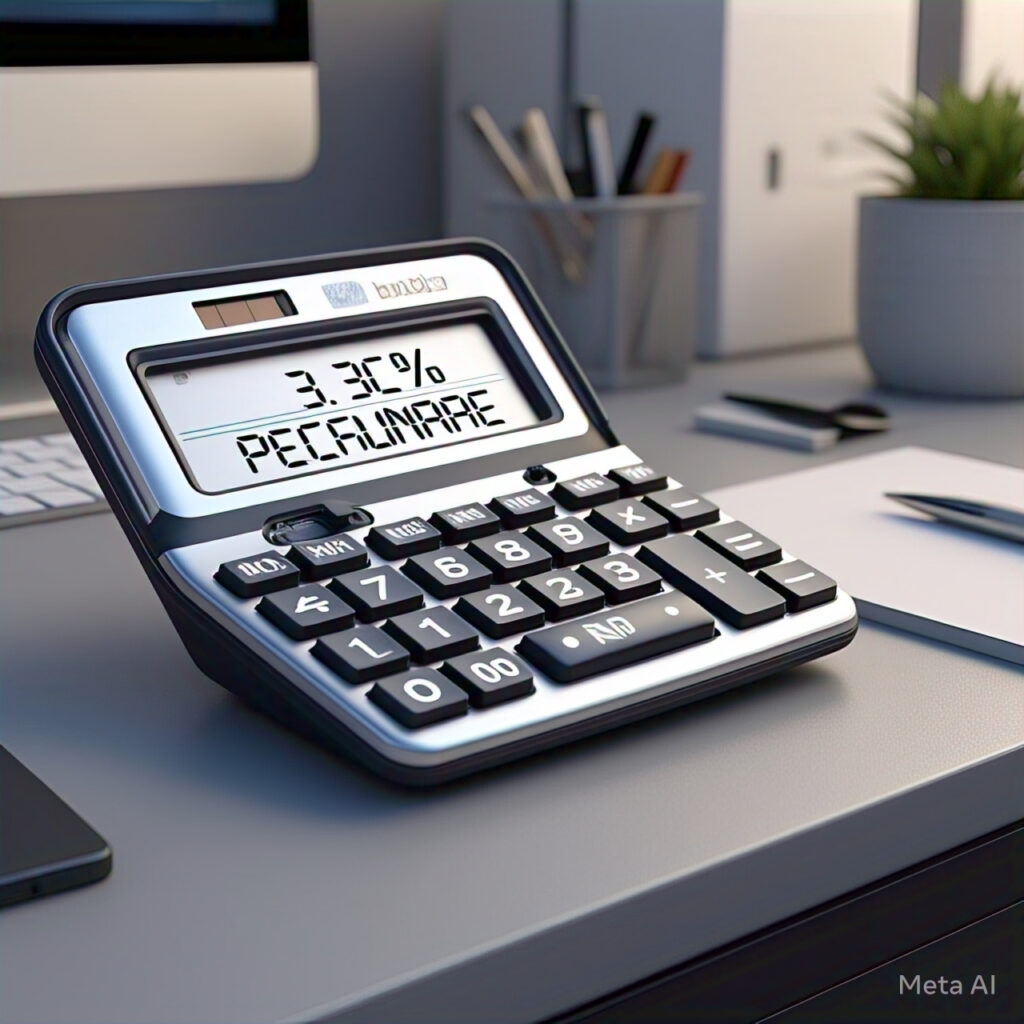Percentage Calculator
Percentage Calculator
Please provide any two values below and click the “Calculate” button to get the third value.
Percentage Difference Calculator
Percentage Change Calculator
What is a Percentage?
In mathematics, a percentage is a number or ratio that represents a fraction of 100. It is often denoted by the symbol “%”. For example, 35% is equivalent to the decimal 0.35 or the fraction 35/100.
Percentage Calculator
What is a Percentage? A Complete Guide with Formulas and Examples
In our daily lives, we often come across terms like “20% off,” “interest rate of 7%,” or “50% completed.” But what exactly does percentage mean, and how is it calculated? Understanding percentages is essential not just in math, but also in real-world situations like shopping, finance, education, and data analysis.
In this blog, we’ll break down the concept of percentage, explore its formulas, and walk through examples to help you master this important mathematical concept.

Understanding Percentage
A percentage is a way of expressing a number as a fraction of 100. The term comes from the Latin phrase per centum, which means “by the hundred.” When we say 25%, we’re referring to 25 out of 100, or 25/100.
Percentages are dimensionless numbers, which means they do not have units. They are used to compare ratios, show increases or decreases, and express proportions in a simple, standardized way.
Percentages can be written in several ways:
- As a symbol: 25%
- In words: 25 percent
- As a decimal: 0.25
- As a fraction: 25/100, which can be simplified to 1/4
How to Calculate a Percentage
To calculate a percentage, you multiply a ratio or fraction by 100. Here’s a basic example:
Example:
Suppose there are 25 male students out of a total of 50 students in a class.
- First, write the ratio:
25/50 = 0.5 - Now multiply by 100 to get the percentage:
0.5 × 100 = 50%
So, 50% of the students in the class are male.
The Percentage Formula
You can calculate percentages using a standard formula: Percentage (P)=Part (V2)Whole (V1)×100\text{Percentage (P)} = \frac{\text{Part (V2)}}{\text{Whole (V1)}} \times 100Percentage (P)=Whole (V1)Part (V2)×100
Alternatively, in algebraic form: P×V1=V2P × V1 = V2P×V1=V2
Where:
- P is the percentage (in decimal form)
- V1 is the original or total value
- V2 is the portion or result
Example:
If P × 30 = 1.5, solve for P: P=1.530=0.05P = \frac{1.5}{30} = 0.05P=301.5=0.05
Convert the decimal to a percentage: 0.05×100=50.05 × 100 = 5%0.05×100=5
So, 5% of 30 is 1.5.
Percentage Difference Formula
The percentage difference compares how far apart two values are, relative to their average. It’s useful when comparing two numbers without labeling one as “original” or “new.” Percentage Difference=∣V1−V2∣(V1+V2)2×100\text{Percentage Difference} = \frac{|V1 – V2|}{\frac{(V1 + V2)}{2}} × 100Percentage Difference=2(V1+V2)∣V1−V2∣×100
Where:
- V1 and V2 are the two values being compared
- |V1 – V2| is the absolute difference between the values
Example:
If V1 = 10 and V2 = 6:
- Find the difference:
|10 – 6| = 4 - Calculate the average:
(10 + 6)/2 = 8 - Apply the formula:
(4 / 8) × 100 = 50%
So, the percentage difference between 10 and 6 is 50%.
Percentage Change Formula
The percentage change tells you how much a value has increased or decreased compared to its original amount. It is commonly used to track growth or decline in business, population, investments, and more. Percentage Change=New Value – Original ValueOriginal Value×100\text{Percentage Change} = \frac{\text{New Value – Original Value}}{\text{Original Value}} × 100Percentage Change=Original ValueNew Value – Original Value×100
There are two types: increase and decrease.
Example 1: Percentage Increase
If a value increases from 500 to 550: Percentage Change=550−500500×100=50500×100=10\text{Percentage Change} = \frac{550 – 500}{500} × 100 = \frac{50}{500} × 100 = 10%Percentage Change=500550−500×100=50050×100=10
This is a 10% increase.
Example 2: Percentage Decrease
If a value decreases from 500 to 450: Percentage Change=450−500500×100=−50500×100=−10\text{Percentage Change} = \frac{450 – 500}{500} × 100 = \frac{-50}{500} × 100 = -10%Percentage Change=500450−500×100=500−50×100=−10
This is a 10% decrease.
The negative sign indicates a drop in value.
Real-World Uses of Percentage
Percentages are everywhere in our daily lives. Here are some common examples:
- Shopping Discounts: A 30% discount on a $100 item means you save $30.
- Interest Rates: A 5% annual interest rate means you earn $5 on every $100 in a savings account.
- Test Scores: Scoring 45 out of 50 on a test is (45/50) × 100 = 90%.
- Population Growth: If a town’s population grows from 20,000 to 22,000, that’s a 10% increase.
Percentage Calculator: Make Math Easy
A percentage calculator is an online or built-in tool that quickly calculates percentages, differences, and changes. It’s especially helpful for complex or large numbers.
You can use percentage calculators to:
- Find what percentage one number is of another
- Calculate percentage increase or decrease
- Determine a part of a whole using percentage values
Summary: Key Takeaways
- A percentage is a ratio expressed out of 100.
- It helps compare proportions and analyze data.
- Basic percentage formula: P×V1=V2P × V1 = V2P×V1=V2
- Percentage difference compares two values without identifying an original.
- Percentage change measures how much a value has increased or decreased.
- Percentages are widely used in shopping, finance, education, and more.
- A percentage calculator can simplify your calculations instantly.
Understanding percentages can make you more confident in handling numbers, whether you’re calculating exam results, shopping discounts, or analyzing trends. With the help of formulas and examples, percentages become a simple yet powerful tool in everyday life.
